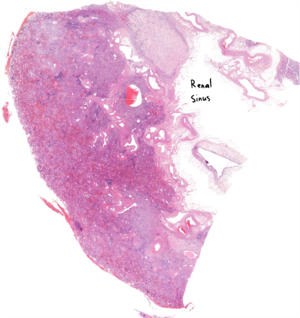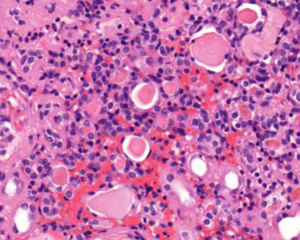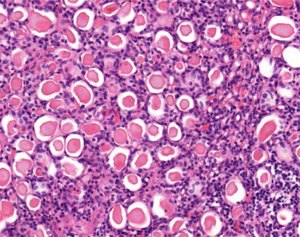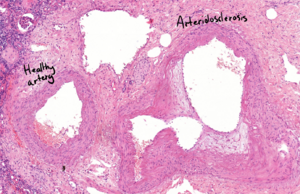11. Hyalinised glomeruli: Difference between revisions
(Created page with "'''Staining''': HE '''Organ''': Kidney '''Description''': Four typical signs can be seen: # Most glomeruli contain globular eosinophilic structures. Some glomeruli are unaffected. # The tubulointerstitium is infiltrated by RBCs, lymphocytes and plasma cells # The tubules contain eosinophilic substance, making they look like the thyroid histologically. This process is called thyroidisation. # Arteriolosclerosis of the vessels in the renal sinus '''Diagnosis''': End-s...") |
(No difference)
|
Revision as of 10:08, 16 June 2022
Staining: HE
Organ: Kidney
Description:
Four typical signs can be seen:
- Most glomeruli contain globular eosinophilic structures. Some glomeruli are unaffected.
- The tubulointerstitium is infiltrated by RBCs, lymphocytes and plasma cells
- The tubules contain eosinophilic substance, making they look like the thyroid histologically. This process is called thyroidisation.
- Arteriolosclerosis of the vessels in the renal sinus
Diagnosis: End-stage chronic kidney disease
Causes:
- Diabetic nephropathy
- Chronic pyelonephritis
- Rapidly progressing glomerulonephritis
- Glomerulonephritis
Theory:
Hyalinisation of the glomeruli is the morphology of the end-stage kidney disease (chronic renal failure), which is often the end-result of the conditions mentioned above.
Despite the loss of many glomeruli some are still normal and functioning, so the kidney still produces some urine.





